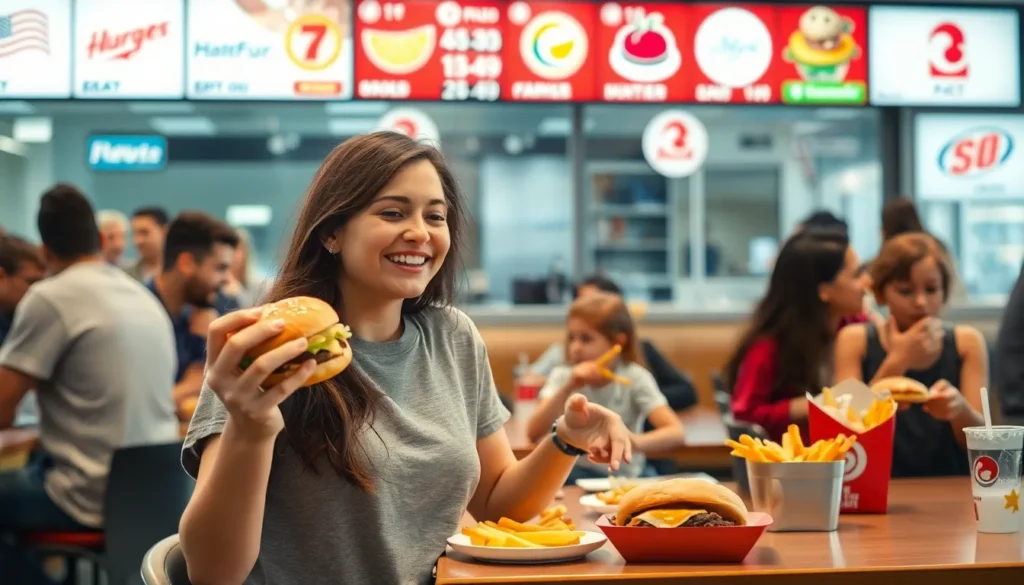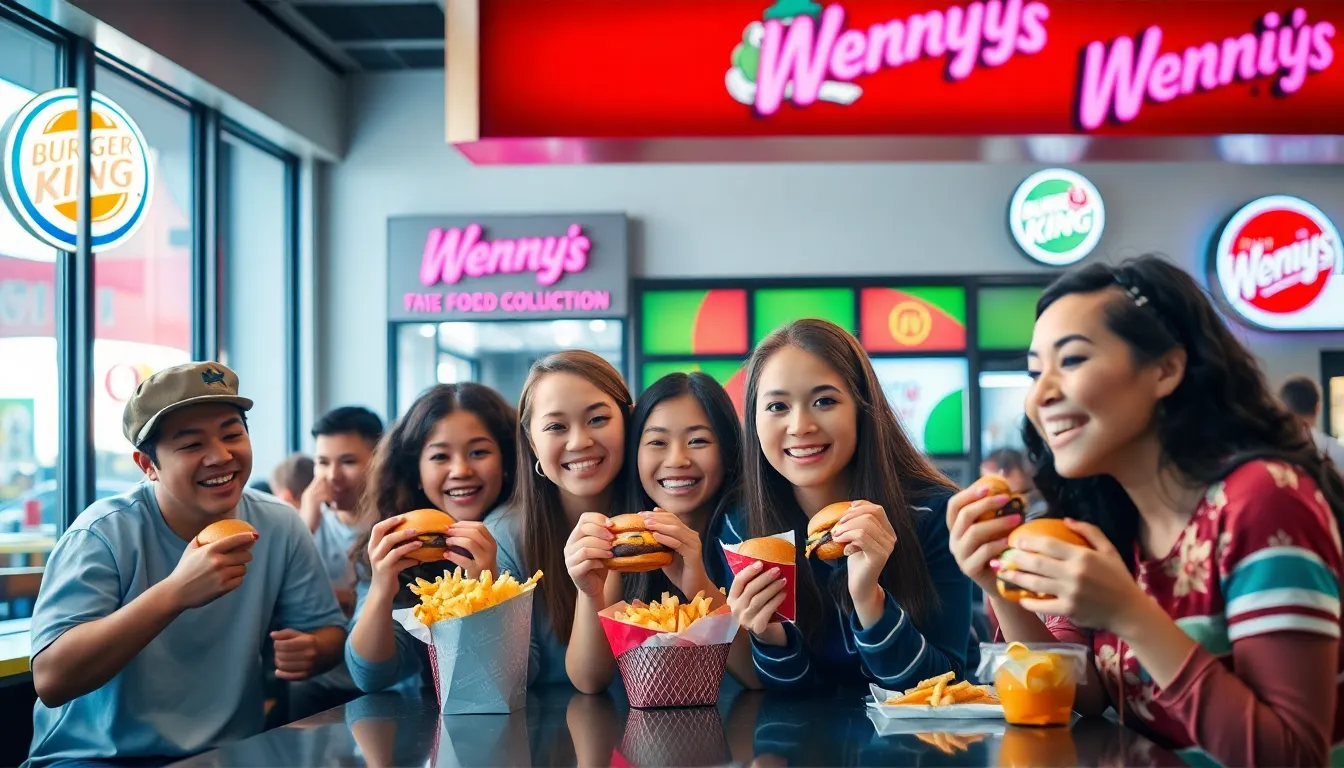
In the fast-food industry, McDonald’s stands as a giant, but it’s not without its challengers. As consumer preferences evolve, a diverse range of competitors has emerged, each vying for a share of the market. From established brands to innovative newcomers, these rivals are reshaping the landscape of quick-service dining.
Understanding McDonald’s competitors is crucial for grasping the dynamics of this ever-changing sector. Each competitor brings unique offerings and strategies that appeal to different customer segments. By examining these players, one can uncover the trends and tactics driving the fast-food industry today.
McDonalds Competitors
McDonald’s faces numerous competitors within the fast-food industry, each impacting its market share and customer engagement. Key rivals include:
- Burger King: Known for its flame-grilled burgers, Burger King appeals to similar customer segments. It frequently implements aggressive marketing strategies and promotional offers, catering to value-driven consumers.
- Wendy’s: Wendy’s differentiates itself with fresh, never frozen beef and a focus on quality ingredients. Its innovative social media presence boosts brand engagement and attracts younger demographics.
- Taco Bell: As a leader in the Mexican fast-food segment, Taco Bell draws customers seeking diverse menu options. Its adaptable menu caters to various dietary preferences, enhancing its competitive standing.
- Subway: Subway emphasizes fresh, customizable sandwiches and healthy eating. Its focus on freshness and variety helps capture health-conscious consumers who prefer lighter fast food options.
- Chick-fil-A: Renowned for its chicken sandwiches, Chick-fil-A prioritizes quality service and strong customer loyalty. Its family-oriented branding appeals to a dedicated customer base seeking convenient dining solutions.
- Starbucks: While primarily a coffee chain, Starbucks competes with McDonald’s in breakfast and snack offerings. Its unique atmosphere and premium beverage options attract a diverse clientele.
These competitors leverage distinct strengths and marketing strategies to appeal to various customer preferences, continually challenging McDonald’s position in the market. Understanding their approaches is crucial for adapting to shifts in consumer demand and maintaining market relevance.
Major Fast Food Competitors

The competitive landscape for McDonald’s includes several major fast food players, each with unique strategies and offerings that attract distinct customer segments. Understanding these competitors is essential for grasping market dynamics.
Burger King
Burger King targets value-driven consumers with flame-grilled burgers and a diverse menu. Known for its bold marketing campaigns, it frequently positions itself as a direct competitor to McDonald’s, especially with its “Have It Your Way” slogan emphasizing customization. The Whopper, Burger King’s signature product, offers a larger portion option compared to many McDonald’s items, appealing to customers seeking hearty meals. Additionally, aggressive pricing strategies, such as value menus and promotional discounts, contribute to attracting budget-conscious diners.
Wendy’s
Wendy’s caters to health-conscious and younger consumers, emphasizing fresh, high-quality ingredients. The brand’s commitment to never frozen beef emphasizes its focus on quality, which sets it apart in the fast food landscape. Wendy’s engages effectively on social media, utilizing witty content to resonate with its audience. Menu items, like the “4 for $4” meal deal, target affordability while creating variety. This dual strategy of quality and value positions Wendy’s as an appealing choice for customers seeking both healthy and satisfying meal options.
Fast Casual Competitors
Fast-casual restaurants represent a growing segment of the dining industry, offering higher-quality food in a more relaxed setting. These competitors appeal to consumers seeking convenience without sacrificing quality.
Chipotle
Chipotle emphasizes fresh, customizable Mexican-inspired dishes, catering to health-conscious consumers. The brand’s focus on organic ingredients and sustainably sourced proteins differentiates it from traditional fast food. With its build-your-own burrito, bowl, or taco concept, Chipotle engages customers seeking personalized dining experiences. The fast-casual chain utilizes digital platforms for efficient ordering and promotes sustainability initiatives, aligning with modern consumers’ values. Its loyalty program encourages repeat visits and brand loyalty among fans of its fresh offerings.
Panera Bread
Panera Bread positions itself as a leader in fast casual with a strong emphasis on wholesome, clean ingredients. The chain targets customers who prioritize nutritional transparency and quality. Signature offerings include freshly baked bread, soups, salads, and sandwiches. Panera Bread leverages Wi-Fi and a cozy atmosphere, making it a popular spot for remote workers and casual meetings. The brand also implements a successful digital ordering system, including a rewards program, which increases customer engagement and repeat business. The consistent focus on innovation, such as seasonal menu items and better-for-you choices, keeps Panera relevant in an increasingly health-conscious market.
Regional Competitors
Regional competitors significantly impact McDonald’s market landscape, capturing specific consumer preferences and redefining fast-food experiences. Brands like In-N-Out Burger and Shake Shack exemplify how localized offerings can challenge larger chains through unique concepts and dedicated followings.
In-N-Out Burger
In-N-Out Burger specializes in a streamlined menu featuring fresh ingredients and made-to-order meals. Its iconic double cheeseburger and animal-style fries appeal to loyal customers who prioritize quality and simplicity. In-N-Out’s commitment to using fresh, never frozen beef distinguishes it from competitors. The brand emphasizes renowned customer service, fostering an inviting atmosphere that encourages repeat visits. With locations primarily in California and the Southwest, its regional strength reinforces McDonald’s need to adapt to consumer preferences for freshness and straightforward dining experiences.
Shake Shack
Shake Shack targets millennials and urban consumers with a modern twist on classic fast food. Known for its high-quality beef burgers, crinkle-cut fries, and artisanal shakes, Shake Shack attracts gourmet enthusiasts who seek premium fast-casual options. The brand’s commitment to using all-natural ingredients from responsible sources enhances its appeal among health-conscious diners. Additionally, Shake Shack’s innovative dining concepts, including outdoor seating and digital kiosks, cater to modern consumer behaviors and preferences. Its expanding presence in key cities poses a notable challenge to McDonald’s, particularly among younger demographics prioritizing quality and experience in fast dining.
Health-Oriented Competitors
Health-oriented competitors place a strong emphasis on nutritious offerings, catering to consumers increasingly focused on health and wellness. These brands utilize fresh ingredients and transparent sourcing practices to attract health-conscious diners.
Subway
Subway captures health-conscious consumers with its customizable sandwich options. Diners can select from a variety of fresh vegetables, lean meats, and whole-grain breads. The brand prominently displays nutritional information, enabling customers to make informed choices. Subway’s “Fresh Fit” meals target those seeking lower-calorie, heart-healthy options, enhancing its appeal in the fast-food landscape. By introducing wraps and salads, Subway diversifies its menu to attract a broader range of health-focused patrons.
Sweetgreen
Sweetgreen distinguishes itself by promoting a farm-to-table model through seasonal menu offerings. The brand prioritizes organic vegetables and sustainably sourced proteins, appealing to environmentally conscious diners. Sweetgreen’s commitment to health extends to its transparent sourcing practices, providing detailed nutritional information for all menu items. The assembly-line format allows customers to customize bowls with greens, grains, and proteins, catering to diverse dietary preferences. Locations encourage community engagement by hosting local food initiatives, further solidifying its health-oriented brand image.
Conclusion
The competitive landscape surrounding McDonald’s is dynamic and multifaceted. As consumer preferences shift towards quality and health-conscious options, the brand faces challenges from both traditional fast-food giants and innovative fast-casual newcomers. Each competitor brings distinct strategies and offerings that resonate with various customer segments.
To remain relevant in this evolving market, McDonald’s must continuously adapt and innovate. By understanding the strengths and tactics of its rivals, the brand can better position itself to meet changing consumer demands and maintain its status as a leader in the fast-food industry. The ongoing competition will undoubtedly shape the future of quick-service dining, making it essential for McDonald’s to stay agile and responsive.















